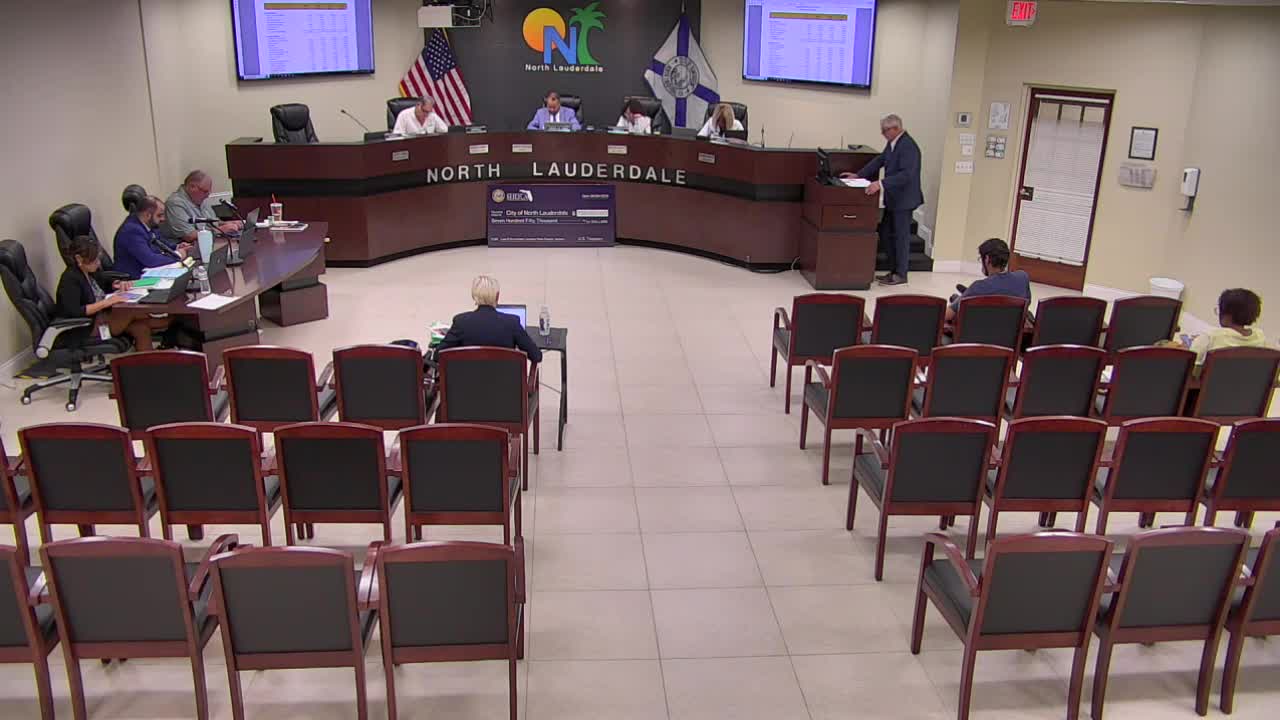City Faces Soaring Water Treatment Costs Amid Infrastructure Crisis
September 12, 2024 | City of North Lauderdale, Broward County, Florida
This article was created by AI summarizing key points discussed. AI makes mistakes, so for full details and context, please refer to the video of the full meeting. Please report any errors so we can fix them. Report an error »

In a recent government meeting, officials discussed significant budgetary concerns regarding the water and sewage management systems, highlighting alarming increases in operational costs and the need for infrastructure improvements.
The discussion revealed that sludge removal costs have surged to $250,000, nearly quadrupling from the previous year. This spike raises concerns about the potential for even higher expenses due to emerging contaminants like PFAS, which could escalate costs to as much as $2.5 million. The limited options for sludge disposal further complicate the situation, as current practices involve transporting sludge to Okeechobee.
Officials also addressed the aging water treatment plant, which is nearing the end of its useful life. A proposed budget of $7.7 million has been allocated for the design of a new plant, funded through a 100% forgiveness loan from the state revolving fund. This investment is crucial as the existing facility struggles with frequent breakdowns and maintenance issues, costing an additional $500,000 annually for operations and repairs.
Chemical costs for plant operations are projected at $400,000, covering essential substances like lime, chlorine, and fluoride. Additionally, $1.4 million has been earmarked for the installation of an automatic meter reading system, aimed at improving efficiency in water distribution.
On the sewage management front, the city spends nearly $4 million annually to treat sewage through a partnership with Broward County. This cost reflects the complexities of maintaining a gravity-fed sewage system that relies on lift stations to transport waste to treatment facilities.
The meeting underscored the pressing need for infrastructure upgrades and the financial implications of maintaining aging systems. As officials prepare for future challenges, the focus remains on securing funding and implementing necessary improvements to ensure reliable water and sewage services for the community.
The discussion revealed that sludge removal costs have surged to $250,000, nearly quadrupling from the previous year. This spike raises concerns about the potential for even higher expenses due to emerging contaminants like PFAS, which could escalate costs to as much as $2.5 million. The limited options for sludge disposal further complicate the situation, as current practices involve transporting sludge to Okeechobee.
Officials also addressed the aging water treatment plant, which is nearing the end of its useful life. A proposed budget of $7.7 million has been allocated for the design of a new plant, funded through a 100% forgiveness loan from the state revolving fund. This investment is crucial as the existing facility struggles with frequent breakdowns and maintenance issues, costing an additional $500,000 annually for operations and repairs.
Chemical costs for plant operations are projected at $400,000, covering essential substances like lime, chlorine, and fluoride. Additionally, $1.4 million has been earmarked for the installation of an automatic meter reading system, aimed at improving efficiency in water distribution.
On the sewage management front, the city spends nearly $4 million annually to treat sewage through a partnership with Broward County. This cost reflects the complexities of maintaining a gravity-fed sewage system that relies on lift stations to transport waste to treatment facilities.
The meeting underscored the pressing need for infrastructure upgrades and the financial implications of maintaining aging systems. As officials prepare for future challenges, the focus remains on securing funding and implementing necessary improvements to ensure reliable water and sewage services for the community.
View full meeting
This article is based on a recent meeting—watch the full video and explore the complete transcript for deeper insights into the discussion.
View full meeting